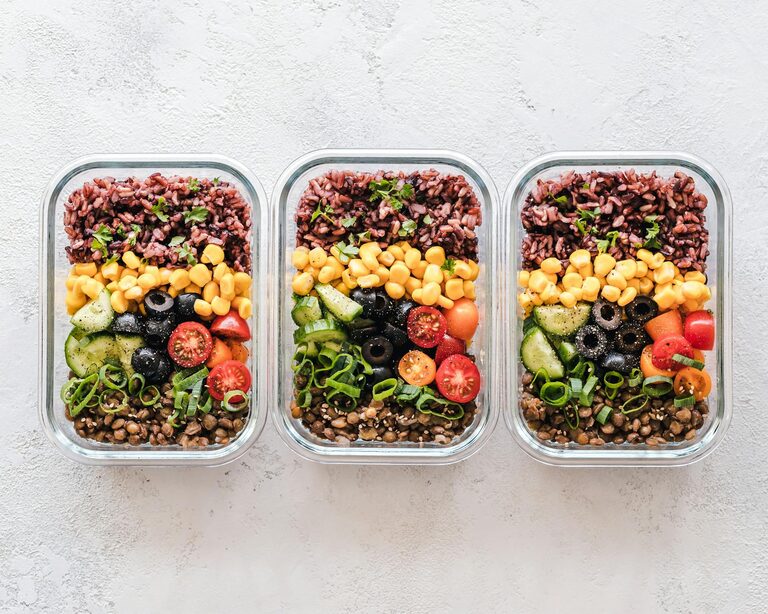How to Plan Balanced Meals Without Stress: A Simple Guide

Planning balanced meals can often feel overwhelming, especially with busy schedules and countless food options. But it doesn’t have to be complicated or stressful. By adopting a few simple strategies, you can create nutritious, delicious meals that support your health and lifestyle. This guide will walk you through practical steps to plan balanced meals without the fuss.
What Is a Balanced Meal?
Before diving into planning, it’s helpful to understand what a balanced meal includes. A balanced meal provides a good mix of:
– Proteins: Essential for muscle repair and growth (e.g., chicken, beans, tofu).
– Carbohydrates: Your body’s main energy source (e.g., whole grains, fruits, vegetables).
– Healthy Fats: Important for brain health and energy (e.g., avocados, nuts, olive oil).
– Fiber: Supports digestion (found in vegetables, fruits, and whole grains).
– Vitamins and Minerals: Vital for overall health, found in a variety of plant foods.
The goal is to combine these elements in a way that feels satisfying and enjoyable.
Step 1: Start with Simple Meal Planning Basics
Planning your meals ahead doesn’t mean you need a rigid schedule. Begin with these basics:
– Set Aside Time: Choose a day or evening to plan your meals for the week.
– Check Your Pantry: Take inventory of what you already have.
– Pick a Few Recipes: Aim for 3-5 simple recipes that include the food groups mentioned.
Step 2: Focus on Variety and Color
Including a variety of colors on your plate usually means you’re getting a wide range of nutrients.
– Add leafy greens like spinach or kale.
– Include red, orange, and yellow veggies such as bell peppers or carrots.
– Incorporate fruits like berries or apples for natural sweetness.
Variety also helps keep meals exciting and prevents boredom.
Step 3: Use the Plate Method for Easy Portioning
Instead of counting calories or measuring every ingredient, try the plate method:
– Fill half your plate with vegetables and fruits.
– Reserve one-quarter for lean protein.
– Use the remaining quarter for whole grains or starchy vegetables.
This visual guide keeps portions balanced and ensures a nutrient-rich meal.
Step 4: Plan Ahead with Meal Prep
Meal prep can significantly reduce mealtime stress. Here’s how to approach it:
– Batch Cook Proteins: Grill, bake, or steam chicken, tofu, or legumes in advance.
– Pre-Chop Veggies: Store chopped vegetables in containers for quick use.
– Cook Grains in Bulk: Prepare rice, quinoa, or pasta to use throughout the week.
Having these ready-to-use ingredients lets you quickly assemble balanced meals after a busy day.
Step 5: Keep Healthy Staples on Hand
A well-stocked kitchen is your best tool. Keep these items available:
– Whole grains: brown rice, oats, whole-wheat bread
– Canned beans or lentils
– Frozen vegetables and fruits
– Nuts and seeds
– Herbs and spices for flavor without added salt or sugar
With staples on hand, you can whip up balanced meals even when short on time.
Step 6: Don’t Aim for Perfection
Balanced eating is about consistency, not perfection. It’s okay if some meals are less balanced than others. The key is making mostly healthy choices that you enjoy.
– Allow for favorite treats occasionally.
– Listen to your hunger and fullness cues.
– Be flexible and adjust your plans as needed.
Sample Balanced Meal Ideas
To inspire you, here are some simple combinations you can try:
– Grilled chicken, quinoa, and roasted mixed vegetables.
– Stir-fried tofu with broccoli, bell peppers, and brown rice.
– Whole-grain pasta, tomato sauce with lean ground turkey, and a side salad.
– Bean and vegetable chili topped with avocado slices.
– Oatmeal topped with fresh berries and a handful of nuts.
Helpful Tools to Make Planning Easier
Certain tools can streamline meal planning and prep:
– Meal planning apps or printable templates to organize your week.
– Slow cooker or Instant Pot for hands-off cooking.
– Reusable storage containers for portioning and storing meals.
Experiment with these to find what works best for your routine.
Final Thoughts
Creating balanced meals without stress is achievable through a few mindful habits: understanding nutrition basics, keeping variety, using practical portion guides, preparing ahead, and staying flexible. This approach not only supports your health but also makes mealtime more enjoyable and less of a chore.
Take small steps, keep it simple, and remember that meal planning is a personal journey—find what feels best for you and your lifestyle.
Happy cooking and nourishing!




